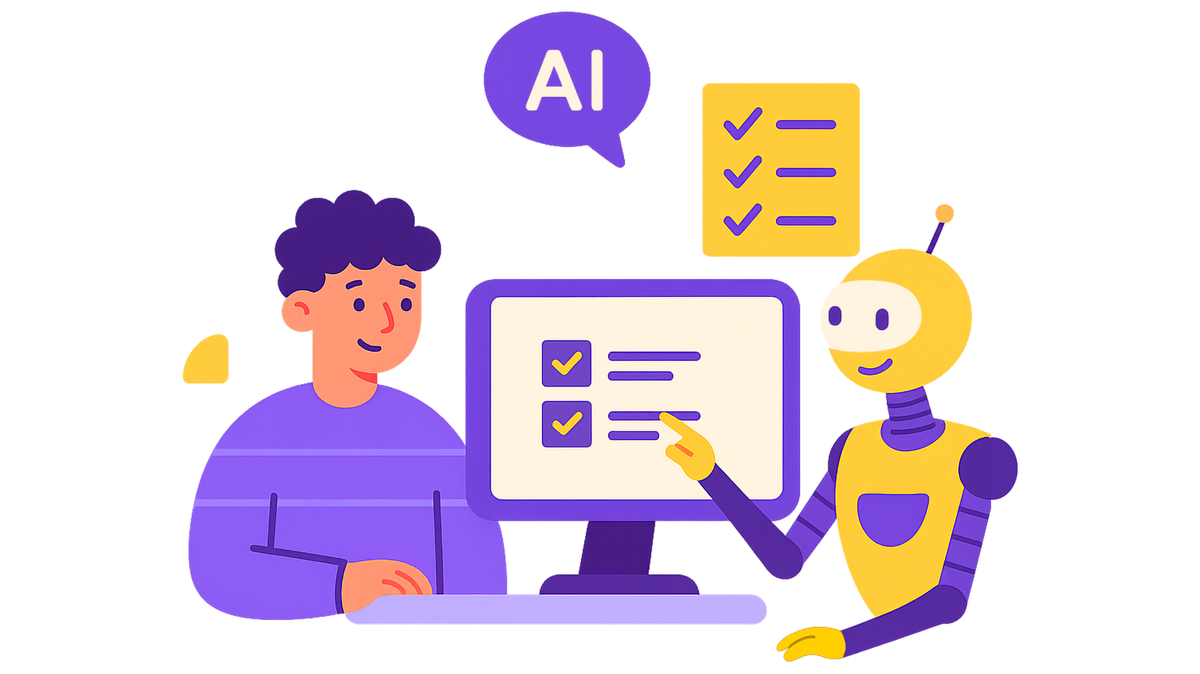Automating Candidate Screening
Learn how automating candidate screening saves time, improves fairness, and helps you hire faster without compromising quality.

Every recruiter knows the pain of sifting through hundreds of CVs for a single role. It is repetitive, time-consuming, and mentally draining. Yet, for many HR teams, manual screening remains the default approach.
The problem is that manual screening simply cannot keep up with modern hiring demands. According to LinkedIn data, the average corporate job advert receives more than 250 applications. Even the most efficient recruiter cannot evaluate that many candidates fairly and consistently.
This is where automation steps in. Automating candidate screening allows recruiters to evaluate every applicant quickly and objectively, freeing time for genuine human engagement. In this guide, you will learn what automated screening is, how it works, and how to implement it responsibly to build a fair, efficient, and scalable hiring process.
What Is Automated Candidate Screening?
Automated candidate screening uses software to evaluate applications based on predefined criteria such as skills, experience, and qualifications. It can be powered by artificial intelligence, keyword filters, or structured scoring models.
In simple terms, the technology reads CVs or application data, ranks candidates against your job requirements, and highlights those who best fit. Some tools even generate predictive scores, estimating how successful a candidate might be in the role.
Why it matters: Automation ensures that every candidate is assessed consistently while reducing the administrative burden on HR teams. It is not about replacing human judgment but enhancing it with reliable data.
How Automation Fits into Modern Recruitment
Recruitment automation has evolved from a luxury to a necessity. Businesses of all sizes now face increased competition for talent, rising costs, and tighter deadlines.
By automating screening, recruiters can:
- Shortlist candidates in minutes instead of hours
- Remove bias from early decision-making
- Improve the candidate experience with faster responses
- Free time for interviews and relationship-building
Automation allows small teams to achieve enterprise-level efficiency, which is why it has become a cornerstone of digital recruitment strategy.
The Main Benefits of Automating Candidate Screening
Automation delivers measurable improvements across speed, cost, and quality. Let’s break down the advantages.
1. Time Savings
Recruiters spend up to 40 per cent of their week reviewing CVs. Automated screening reduces that to minutes by instantly sorting applicants based on your key requirements.
For example, a retail company hiring seasonal staff could use screening automation to filter hundreds of applications within an hour — something that would otherwise take several days.
2. Improved Accuracy and Consistency
Humans are inconsistent by nature. Fatigue, mood, and unconscious bias can influence how candidates are evaluated. Automation applies the same criteria to every applicant, ensuring objectivity.
This consistency not only improves fairness but also increases the quality of shortlisted candidates.
3. Reduced Bias
A well-configured automated system evaluates skill and experience, not names, ages, or universities. By anonymising candidate data during initial screening, organisations can make decisions based purely on merit.
Learn how to avoid bias when automating resume screening to keep your automation ethical and compliant.
4. Faster Time to Hire
Automation speeds up the early stages of recruitment dramatically. Instead of spending weeks screening applications, you can move strong candidates to interviews immediately. This agility prevents top talent from being lost to competitors.
5. Enhanced Candidate Experience
Fast, transparent communication builds trust. Candidates appreciate timely updates and clear expectations. When automation is combined with automated messaging, every applicant receives confirmation and feedback, even if unsuccessful.
If you are unsure how to communicate rejections tactfully, read our guide on how to write a polite rejection email with a positive tone.
How Automated Screening Works in Practice
Automated screening systems typically follow a clear, data-driven process.
- Job Data Input: The recruiter defines essential criteria such as skills, experience, and qualifications.
- CV Parsing: The software reads and extracts relevant details from each CV.
- Matching and Scoring: Each candidate is compared to the job profile, often using keyword matching or machine learning algorithms.
- Shortlisting: Candidates who meet the threshold are automatically flagged for human review.
- Reporting: Recruiters receive dashboards showing key metrics such as the number of qualified candidates and average match score.
This structured process replaces guesswork with measurable, repeatable outcomes.
Key Types of Screening Automation
Rule-Based Screening
Rule-based systems use filters or “if-then” logic. For example, if a candidate does not have the required certification, they are filtered out automatically. This is the simplest and most transparent form of automation.
AI-Powered Screening
Artificial intelligence adds predictive power. It learns from historical hiring data to identify candidates likely to succeed. It can also analyse language patterns, experience depth, and even tone.
However, AI must be used responsibly. Algorithms should be trained on diverse, balanced data to avoid bias. Transparency and human oversight remain essential.
Hybrid Screening
Many organisations adopt a hybrid approach that combines AI speed with human judgement. AI provides a shortlist; recruiters make the final decisions. This ensures balance between efficiency and fairness.
How to Implement Automated Candidate Screening in Your Business
Introducing automation is not about replacing people with software; it is about giving recruiters better tools. Here is how to implement it successfully.
1. Start with a Clear Goal
Define what you want to achieve. Is your goal to save time, improve diversity, or increase hiring quality? Clear objectives help you measure success later.
2. Select the Right Tool
Choose a screening system that integrates with your existing applicant tracking or HR platform. Look for:
- Transparent scoring systems
- Data protection compliance (GDPR-ready)
- Easy configuration without coding
- Reporting and analytics features
For SMEs without an applicant tracking system, see The Small Business Guide to Automating Hiring Without an ATS.
3. Prepare and Clean Your Data
Automation is only as good as the data behind it. Review your existing candidate data for accuracy, remove duplicates, and ensure your job descriptions are inclusive and objective.
4. Pilot the System
Test automation on a small scale before rolling it out company-wide. Compare automated shortlists with human-selected candidates to validate accuracy.
5. Train Recruiters on the Technology
Provide practical sessions on how the system works and what to look for in reports. Recruiters who understand automation are more confident using it responsibly.
6. Monitor and Adjust
Regularly audit your results for anomalies or bias. Make adjustments as your hiring needs evolve. Automation is most effective when it is continuously refined.
Balancing Automation with Human Oversight
The best recruitment teams understand that automation works best when paired with human intuition. Automated systems handle the heavy lifting, but final decisions should always involve a recruiter.
Human oversight ensures that automation does not overlook promising candidates with non-traditional backgrounds. It also preserves empathy — the cornerstone of effective hiring.
Measuring the ROI of Screening Automation
To determine the success of your automation strategy, measure its impact against specific key performance indicators (KPIs):
- Time saved per hire
- Reduction in time-to-hire
- Improvement in candidate diversity
- Cost per hire reduction
- Recruiter satisfaction
Our article 5 Recruitment KPIs Every SME Should Monitor Monthly outlines the most valuable metrics to track.
Avoiding Common Mistakes in Candidate Screening Automation
While automation offers immense value, several common pitfalls can reduce its effectiveness.
Over-Reliance on Keywords
Keyword filters can exclude talented candidates who use different terminology. Focus on skills, not wording. Natural language tools can recognise equivalent phrases.
Ignoring Bias Risks
Even AI can replicate bias if trained on unbalanced data. Review your algorithms regularly and anonymise candidate information where possible.
Lack of Transparency
Candidates have the right to know how their applications are evaluated. Choose systems that provide clear explanations for scores and decisions.
Failing to Combine Automation with Communication
Automation can make recruitment impersonal if not paired with thoughtful messaging. Use automated workflows to send updates, reminders, and interview invitations.
To see how scheduling can also be automated easily, read How to Automate Interview Scheduling.
Real-World Example: Automation in Action
A mid-sized technology company struggling with slow hiring implemented automated candidate screening. Within one month:
- Screening time dropped from 12 hours per role to less than one
- Shortlisted candidates matched final hires with 92 per cent accuracy
- Recruiters redirected their time toward interviews and candidate engagement
The system paid for itself within the first quarter, proving automation’s value in both cost savings and quality improvement.
The Legal and Ethical Side of Automation
The UK Equality Act 2010 and the General Data Protection Regulation (GDPR) require employers to ensure that automated decisions are fair, transparent, and explainable.
If you are uncertain about using AI tools, read Can ChatGPT legally be used to make hiring decisions? for a detailed breakdown of the current legal landscape.
Automation should always enhance fairness, not compromise it. Responsible use strengthens both compliance and employer reputation.
Integrating Screening Automation into Broader Recruitment Workflows
Automated screening becomes even more powerful when integrated with other automated recruitment functions.
You can connect it with:
- Job posting automation to publish roles simultaneously across platforms
- Automated interview scheduling for instant coordination
- Automated candidate communication to ensure prompt updates
- Automated onboarding workflows for a smooth transition post-hire
If you want quick wins, check out 7 Simple Hiring Workflows You Can Automate in One Afternoon.
The Business Case for Automation
For small and medium-sized enterprises, automation levels the playing field against larger employers. It allows small teams to process more applications with the same resources, reducing costs and increasing agility.
To understand how automation improves SME recruitment performance, read Using Automation to Save Time in SME Recruitment.
Automating candidate screening is not about removing human touch — it is about removing inefficiency. It helps recruiters make better decisions faster, using data rather than instinct alone.
By combining technology with empathy and oversight, your organisation can create a hiring process that is efficient, fair, and candidate-friendly.
If you are ready to see what automation can do for your hiring process, book a call with our team. We will help you identify quick wins and long-term strategies for ethical, effective recruitment automation.




